Meet the primate residents of Florida's Monkey Island: Ralph, Emily, and Ebony
Monkey Island: A unique, historical fixture of Homosassa
These monkeys have their own private island in the middle of the Homosassa River. Monkey Island has been around since the 1960s -- starting out as a pile of rocks. Today, it still stands. The monkey residents are cared for by nearby resort owners.
HOMOSASSA, Fla. - A young boy shyly walks to the edge of the restaurant, located right on Homosassa River. He peers between the wired fencing, gazing as a white, flat-bottomed boat treks slowly across the water.
It's 3:30 p.m. It's feeding time – but not for those sitting in the shade at Florida Cracker Riverside Resort's Monkey Bar.
The boat, called the Monkey Barge, is being navigated by one of the resort owners, Blake Lowman. Along for the ride is a tub filled with chopped fruits, vegetables, and special "Monkey Chow." He crosses the river, heading closer to Monkey Island, where three primates reside.
Whoever owns the resort owns the monkeys. It's always been that way, he says.
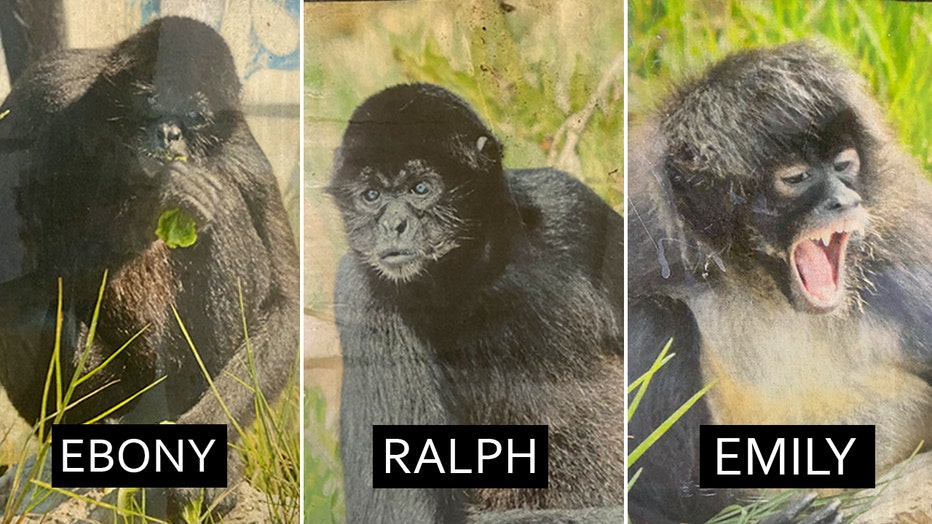
Credit: Blake Lowman
READ: Monkey Island in Homosassa is getting a major overhaul in 2022
The tails of Ralph, Emily, and Ebony perk up. This is when they are usually screeching with excitement. They know what's coming. Twice a day – morning and afternoon – the resort employees head over to their little primate Alcatraz to toss the spider monkeys' meals onto the sandy shores. One of their favorites is sweet potato.
Blake circles the tiny island, making sure there are no hazards or trash tossed by boaters. The trio of monkeys follow the barge. Once he made one loop, he opens the tub, grabs a handful of the monkeys' next meal, and tosses it to the edge of the island.
A scenic tour of Monkey Island
Up in Homosassa and down by the river, you can find Florida’s own Alcatraz. Three spider monkeys -- Ralph, Ebony, and Emily -- call Monkey Island their home. The tiny, manmade island has been there since the 1960s. The best view is from the Florida Cracker Riverside Resort’s Monkey Bar, which owns the historic island.
He can't get too close – at the end of the day, they are still wild animals.
Ralph is the alpha male. Affectionately, the resort employees and locals describe him as the "mean one." He makes the first move. Wrapping his tail around one of the hut's wooden bars, Ralph reaches out and grabs a piece of lettuce.
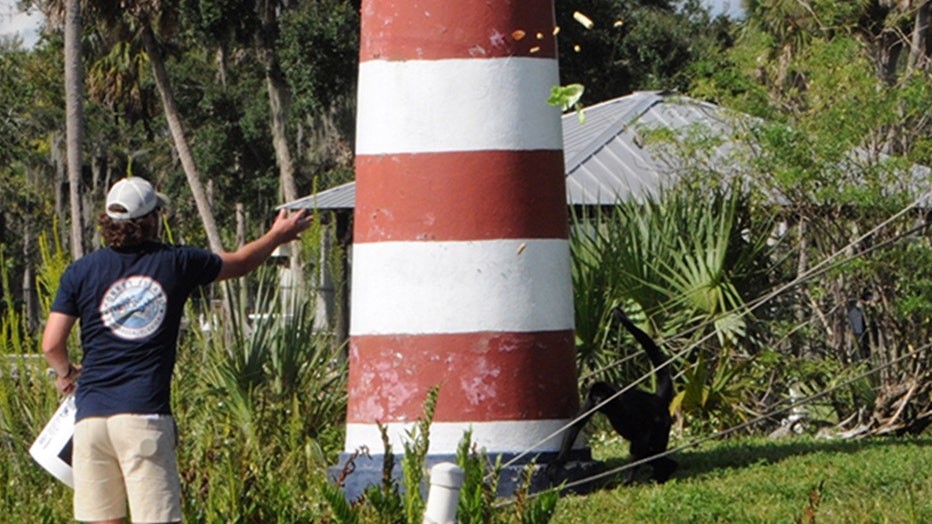
Blake Lowman tosses a piece of lettuce. Ralph is seen watching from the shadow of the lighthouse. (FOX 13/File)
Soon, Ebony and Emily – described as the sweeter and calm ones – join in. All are hanging by their tails, so both hands are free to nibble on bananas, grapes, or even a slice of mango.
Restaurant patrons haven't looked away. They observe from their seats, smiling. From the Monkey Bar, they have a front-row view of the historic island.

Three people stop to take a look at Monkey Island and capture their own photos of the historic site. (FOX 13/File)
Monkey Island origins
Back in the 1960s, the man responsible for creating Monkey Island probably didn't realize it would become as integrated into the community as it is today.
G.A. Furgason, also known as Mr. Homosassa, was a well-known developer during those years. He heard about a pile of hidden rocks in the river causing damage to boats and directed one of the dragline operators to pile dirt around the rocks to make them more visible, creating the small island.
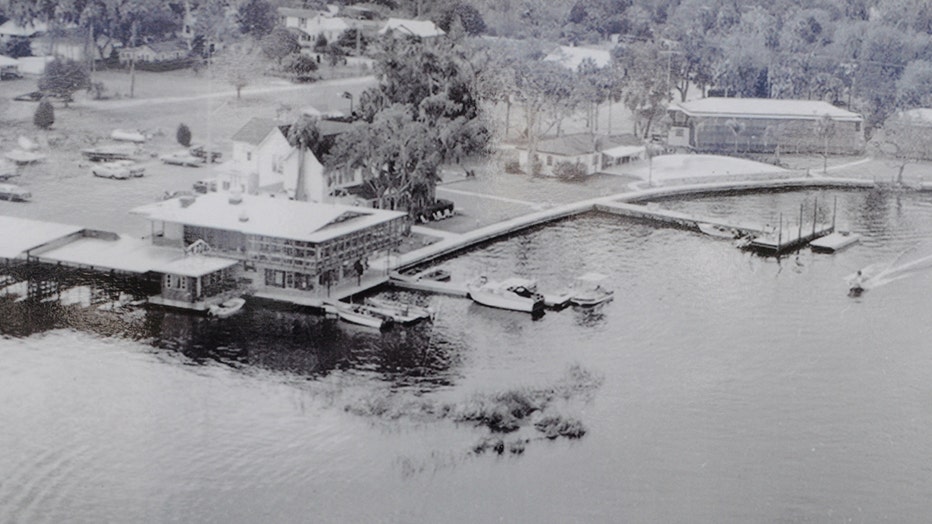
This photo shows what the area looked like before Monkey Island was created. Boaters drove into a pile of rocks near the resort. A drag line operator was directed to cover the rocks with dirt to make it more visible.
MORE: Monkey Island of Homosassa, a Florida tale
A few monkeys were residing in what's known today as Ellie Schiller Homosassa Springs Wildlife Park, but they were causing some problems, such as pickpocketing visitors. That's when Furgason decided to move them to the manmade island.
There were initially seven residents: three spider monkeys and two squirrel monkeys. Two of the squirrel monkeys were Tim and Tiny, who passed away in 2006 and were replaced by Eve and Emily.
Emily came from a family in Kentucky. They initially moved to Fort Lauderdale but were unable to obtain a wildlife license. Jungle Friends Primate Sanctuary, based out of Gainesville, stepped in, playing the middle man between the resort and the family, and brought Emily to the island.
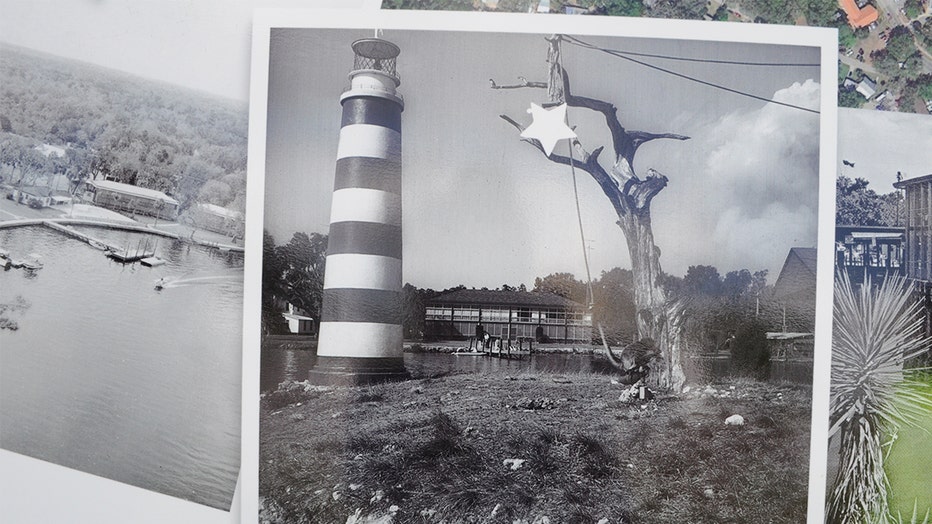
Monkey Island as it was in its early days is seen in this photo collage, which is on display at Florida Cracker Riverside Resort. (FOX 13/File)
One of the original spider monkeys, Sassy, died in 2017. She was described as the matriarch of the group. Eve passed away in 2020.
Ebony is the daughter of Ralph and Sassy.
The Lowman family took over the property at the end of 2019.
"Every owner that has had them and when one passes away they usually replace them," Blake said.
If it comes to it, Blake said they will do the same.
Drone Zone: Monkey Island on the Homosassa River
Ralph, Emily and Ebony. They are the energetic primates living on Florida's own version of Alcatraz, Monkey Island. They love to swing by their tails, enjoy the scenic views of Homosassa River and eat. Their favorite meal? Sweet potato.
Taking care of monkeys
The U.S. Department of Agriculture and Florida Fish and Wildlife set the rules on owning wildlife. The same regulations apply to the owners of Monkey Island.
One of those requirements is providing enrichment activities to keep the monkeys challenged.
"They’re big on the enrichment plans, so you have to write an enrichment plan every year," Blake explained. "An enrichment plan is basically things to stimulate the monkeys’ activity. That would be changing different ropes from different poles so they have new lines of swinging to get across, new routes for them to travel on the island."
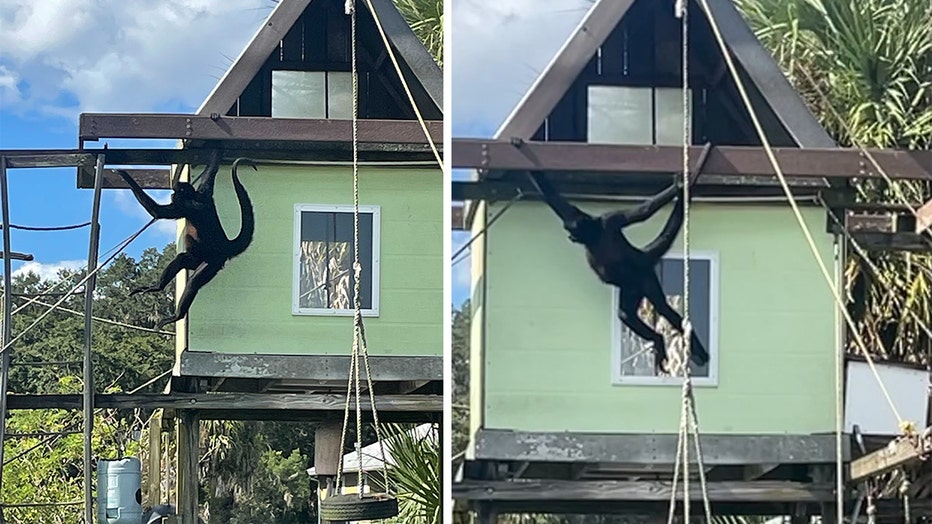
One of the three spider monkeys is seen playing. (Provided by Marie Straight)
Also, the owners must include "Monkey Chow" to provide necessary nutrients for the primates. It must be USDA-approved. Before each feeding, employees chop up the fruits and vegetables, add the chow, and mix it up. Blake said the cutting boards and buckets must be sanitized before using them.
Then, the employees, usually the resort marina staff, head out to Monkey Island using the Monkey Barge to feed them.
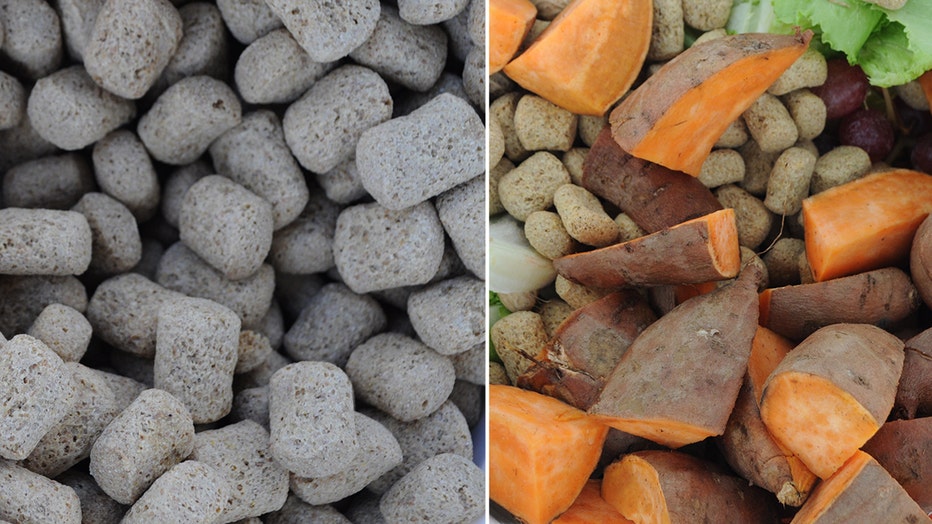
The USDA-approved monkey chow is pictured to the left. On the right, it is mixed in with chopped fruits and vegetables just for Emily, Ebony and Ralph. (FOX 13/File)
The river serves as a natural barrier, so the monkeys cannot escape, Lowman said.
"Monkeys don't like water," he added.

Another requirement is providing an evacuation plan in case of a hurricane. If that happens, they will be taken to a temporary shelter, specifically a zoo in Spring Hill, during that time.
"They’ve never had to be evacuated ever since they’ve been there, since the early 60s," Blake said. "With FWC and USDA we have an emergency evacuation plan in place if a Category 5 came in."
Beyond that, being the owner of Monkey Island means filling out quite a bit of paperwork by the state and federal agencies. It's one of the job duties that most surprised the Lowmans.
Blake's favorite part is that every day is different, and it's satisfying to know that people travel from all over the world to see Monkey Island in person. It makes all the paperwork worth it.
"They can’t believe it," he explained. "It’s such a unique thing and it’s been here since the early 60s, so, basically, it’s part of Homosassa."
To learn more about conserving Monkey Island, head over to the Historic Monkey Island website or the Florida Cracker Riverside Resort website.

